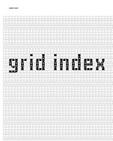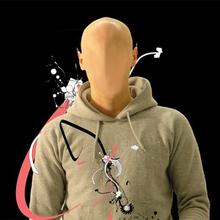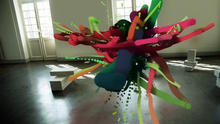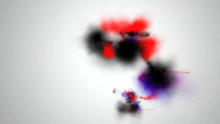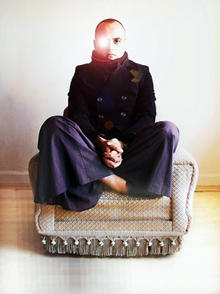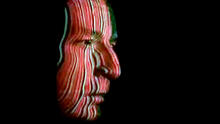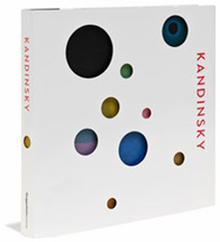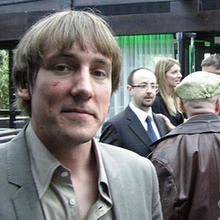unnamed soundsculpture
(2012)by Daniel Franke and Cedric Kiefer is built upon the consideration of creating a moving sculpture from the recorded motion data of a real person. It visualizes the musical piece Kreukeltape by Machinenfabriek.
The basic idea of the project is built upon the consideration of creating a moving sculpture from the recorded motion data of a real person. For our work we asked a dancer, Laura Keil, to visualize a musical piece (Kreukeltape by Machinenfabriek) as closely as possible by movements of her body. She was recorded by three depth cameras (Kinect), in which the intersection of the images was later put together to a three-dimensional volume (3d point cloud), so we were able to use the collected data throughout the further process. The three-dimensional image allowed us a completely free handling of the digital camera, without limitations of the perspective. The camera also reacts to the sound and supports the physical imitation of the musical piece by the performer. She moves to a noise field, where a simple modification of the random seed can consistently create new versions of the video, each offering a different composition of the recorded performance. The multi-dimensionality of the sound sculpture is already contained in every movement of the dancer, as the camera footage allows any imaginable perspective.
The body – constant and indefinite at the same time – 'bursts' the spacealready with its mere physicality, creating a first distinction between the selfand its environment. Only the body movements create a reference to the otherwise invisible space, much like the dots bounce on the ground to give ita physical dimension. Thus, the sound-dance constellation in the video doesnot only simulate a purely virtual space. The complex dynamics of the body movements is also strongly self-referential. With the complex quasi-static, inconsistent forms the body is 'painting', a new reality space emerges whose simulated aesthetics goes far beyond numerical codes.
Similar to painting, a single point appears to be still very abstract, but the more points are connected to each other, the more complex and concrete the image seems. The more perfect and complex the 'alternative worlds' we project (Vilém Flusser) and the closer together their point elements, the more tangible they become. A digital body, consisting of 22.000 points, thus seems so real that it comes to life again.
Nominated for the for the MuVi Award.
Source: Daniel Franke
By merging the footage from multiple cameras, the dance takes on an other worldly quality as one body contorts and rises while another slithers and falls in the same space. The empty black background emphasises the fluidity movements of the performance as it spills over the floor and the surrounding areas.
This meeting of technology, performance and art highlights how fast the creative industries are evolving thanks to new mediums. It's also, rather poignantly a testament to the free thinking of those operating in this amalgam of disciplines, to use a device designed to be used for video games, a rival in other words, to draw attention to it.
Source: Digital Theatre
